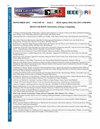开发基于机器学习的无定形药物识别应用程序
IF 1.3
4区 工程技术
Q3 COMPUTER SCIENCE, INFORMATION SYSTEMS
引用次数: 0
摘要
考虑到至少 40% 的市售结晶药物在水中的溶解度很低,无定形药物结构是制药领域需要达到的一个重要特征,因为它有可能提高药物的溶解度。然而,众所周知,无定形局部结构会因所用的非晶化技术而变化。因此,通过对分布函数(PDF)方法等识别与特定非晶化技术相关的这种变化,是药物表征方面的一个重要工具。本研究提出了一种根据非晶化技术对非晶药物进行分类的方法,并利用机器学习对与局部结构变化相关的非晶化技术进行分类。我们利用从低能 X 射线散射数据中获得的实验 PDF 模式来提取信息,并通过蒙特卡罗方法对数据进行扩展,从而创建了一个合成数据集。然后,我们提出使用深度神经网络对这种技术进行评估。根据所获得的结果,我们认为所提出的技术适用于非晶化技术和局部结构识别任务。本文章由计算机程序翻译,如有差异,请以英文原文为准。
Towards a Machine-Learning-Based Application for Amorphous Drug Recognition
The amorphous drug structure represents an important feature to be reached in the pharmaceutical field due to its possibility of increasing drug solubility, considering that at least 40% of commercially available crystalline drugs are poorly soluble in water. However, it is known that the amorphous local structure can vary depending on the amorphization technique used. Therefore, recognizing such variations related to a specific amorphization technique through the pair distribution function (PDF) method, for example, is an important tool for drug characterization concerns. This work presents a method to classify amorphous drugs according to their amorphization techniques and related to the local structure variations using machine learning. We used experimental PDF patterns obtained from low-energy X-rays scattering data to extract information and expanded the data through the Monte Carlo method to create a synthetic dataset. Then, we proposed the evaluation of such a technique using a Deep Neural Network. Based on the results obtained, it is suggested that the proposed technique is suitable for the amorphization technique and local structure recognition task.
求助全文
通过发布文献求助,成功后即可免费获取论文全文。
去求助
来源期刊

IEEE Latin America Transactions
COMPUTER SCIENCE, INFORMATION SYSTEMS-ENGINEERING, ELECTRICAL & ELECTRONIC
CiteScore
3.50
自引率
7.70%
发文量
192
审稿时长
3-8 weeks
期刊介绍:
IEEE Latin America Transactions (IEEE LATAM) is an interdisciplinary journal focused on the dissemination of original and quality research papers / review articles in Spanish and Portuguese of emerging topics in three main areas: Computing, Electric Energy and Electronics. Some of the sub-areas of the journal are, but not limited to: Automatic control, communications, instrumentation, artificial intelligence, power and industrial electronics, fault diagnosis and detection, transportation electrification, internet of things, electrical machines, circuits and systems, biomedicine and biomedical / haptic applications, secure communications, robotics, sensors and actuators, computer networks, smart grids, among others.
 求助内容:
求助内容: 应助结果提醒方式:
应助结果提醒方式:


